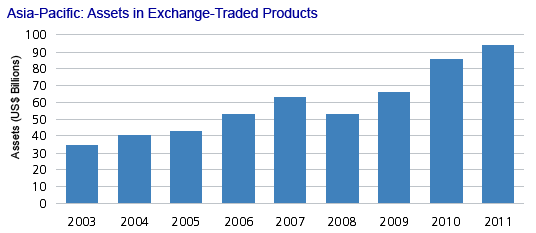Synthetic Exchange-Traded Funds in Asia-Pacific
A Losing Battle?
Abstract
The synthetic ETF market in the Asia-Pacific region is smaller than the US market. Synthetic ETFs form about 11% of the APAC ETF market, whereas they are as much as 37% of the European ETF market. However, due to regulatory restrictions and differing market evolution in the US, synthetic ETFs comprise only about 3% of the overall ETF market.
In a new report, Synthetic Exchange-Traded Funds in Asia-Pacific: A Losing Battle?, Celent discusses the evolution of the Asian ETF market. The volume of exchange-traded funds, and specifically synthetic ETFs, in Asia has risen for a number of reasons. The first reason is that these funds make it easier to invest in markets that are difficult to access or illiquid. The second reason is that synthetic ETFs are less costly to manage and invest in than physical ETFs. As a result, Celent believes that synthetic ETFs have an important role in the leading Asian markets such as Hong Kong, Singapore, and Japan.
Assets under management in exchange-traded products (including exchange-traded funds and exchange-traded commodities) in the Asia-Pacific region have been rising every year since 2003 (except 2008, during the global financial crisis). The Asian market has good growth potential.

“Hong Kong and Singapore have been the leading markets for synthetic ETFs in Asia,” says Anshuman Jaswal, Celent Senior Analyst and author of the report. “However, regulatory intervention in Hong Kong and the possibility of new rules in Singapore mean that the Asian market might struggle to grow at the same pace in the future.”
This report provides an overview of the ETF market, with a focus on synthetic ETFs. The report also discusses the regulatory framework in leading markets such as the US and Europe. After this, the report examines the development of the synthetic ETFs in Asia and the recent direction provided to the market by regulators. Finally, we consider the major issues that may deter investing in synthetic ETFs.

